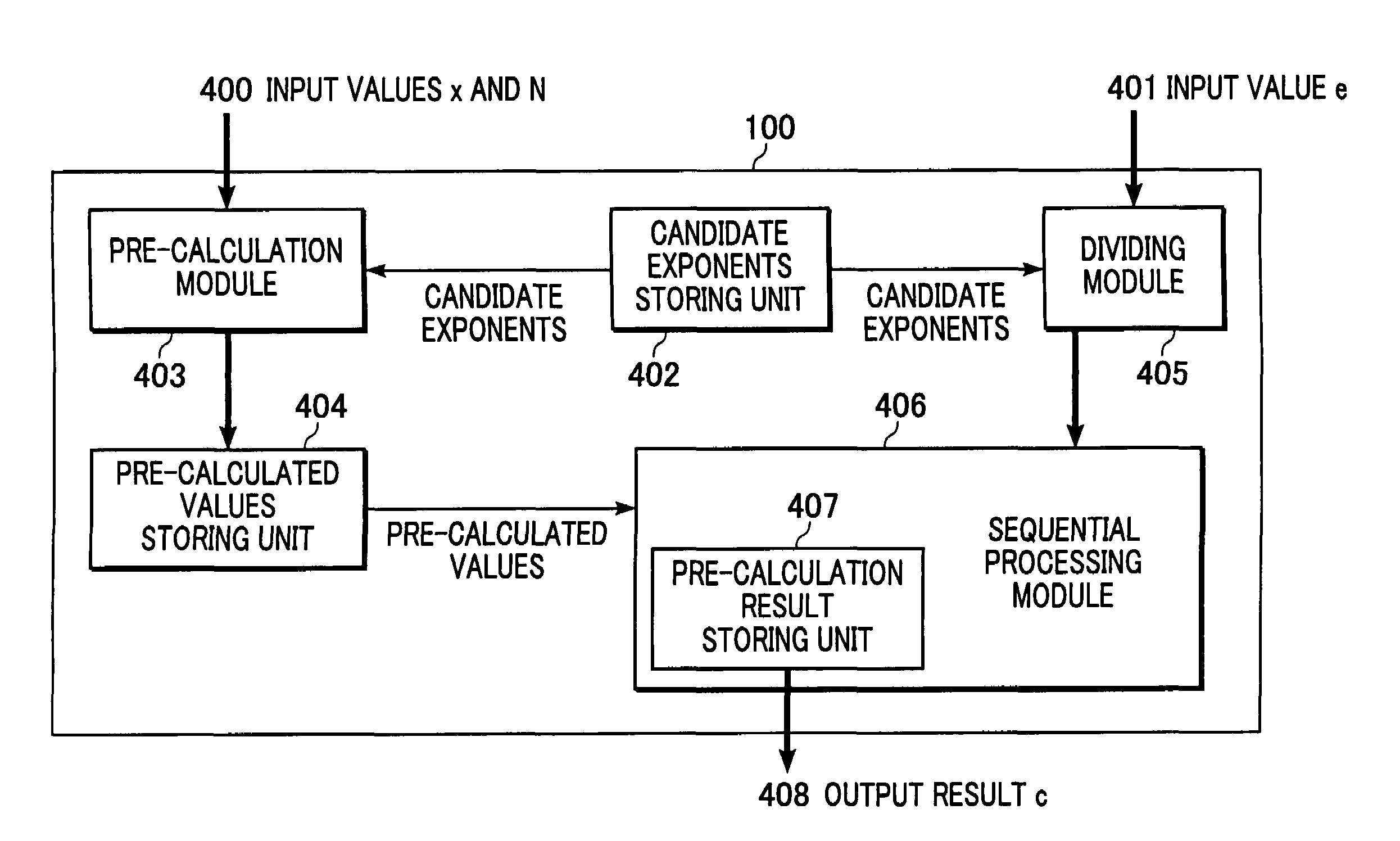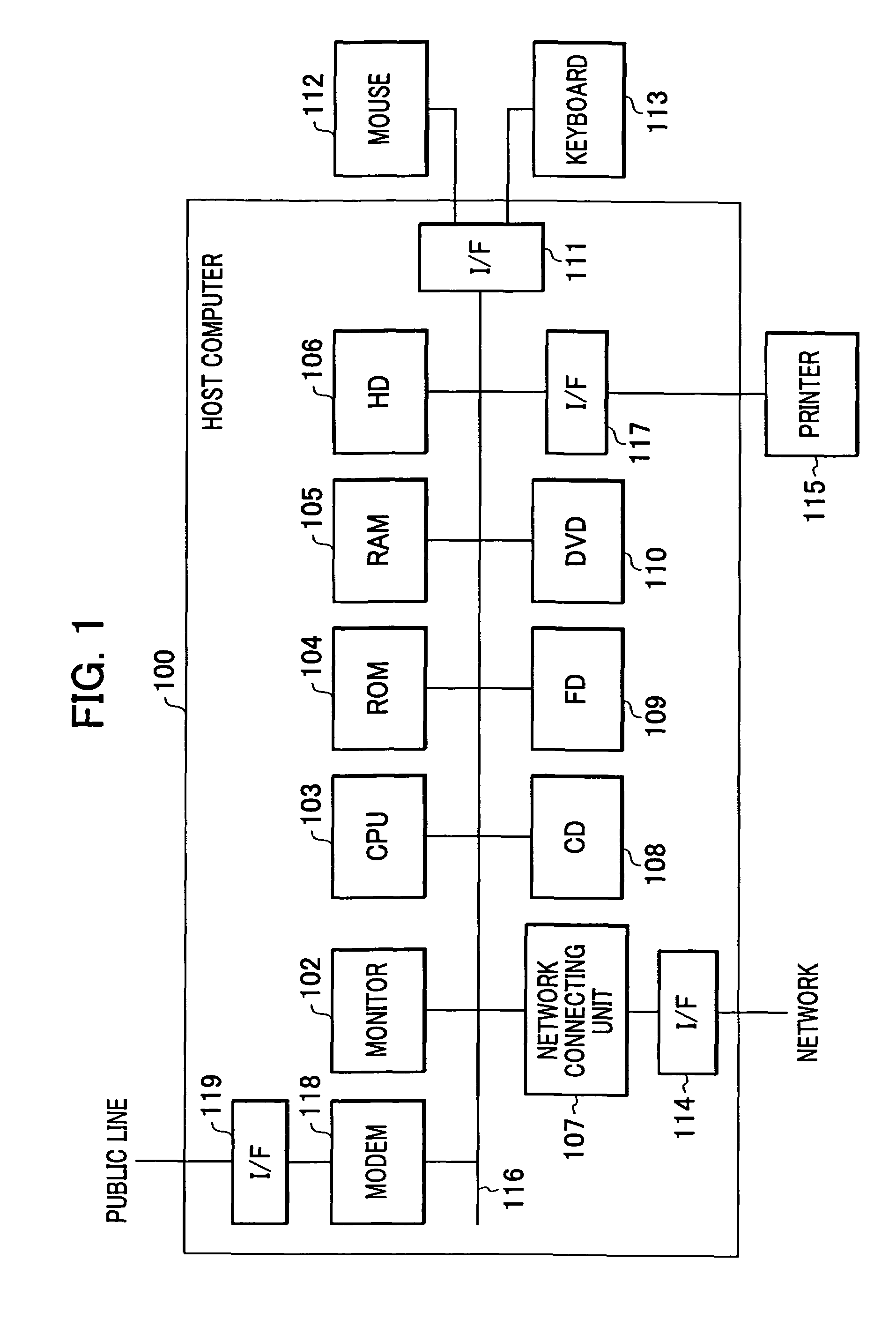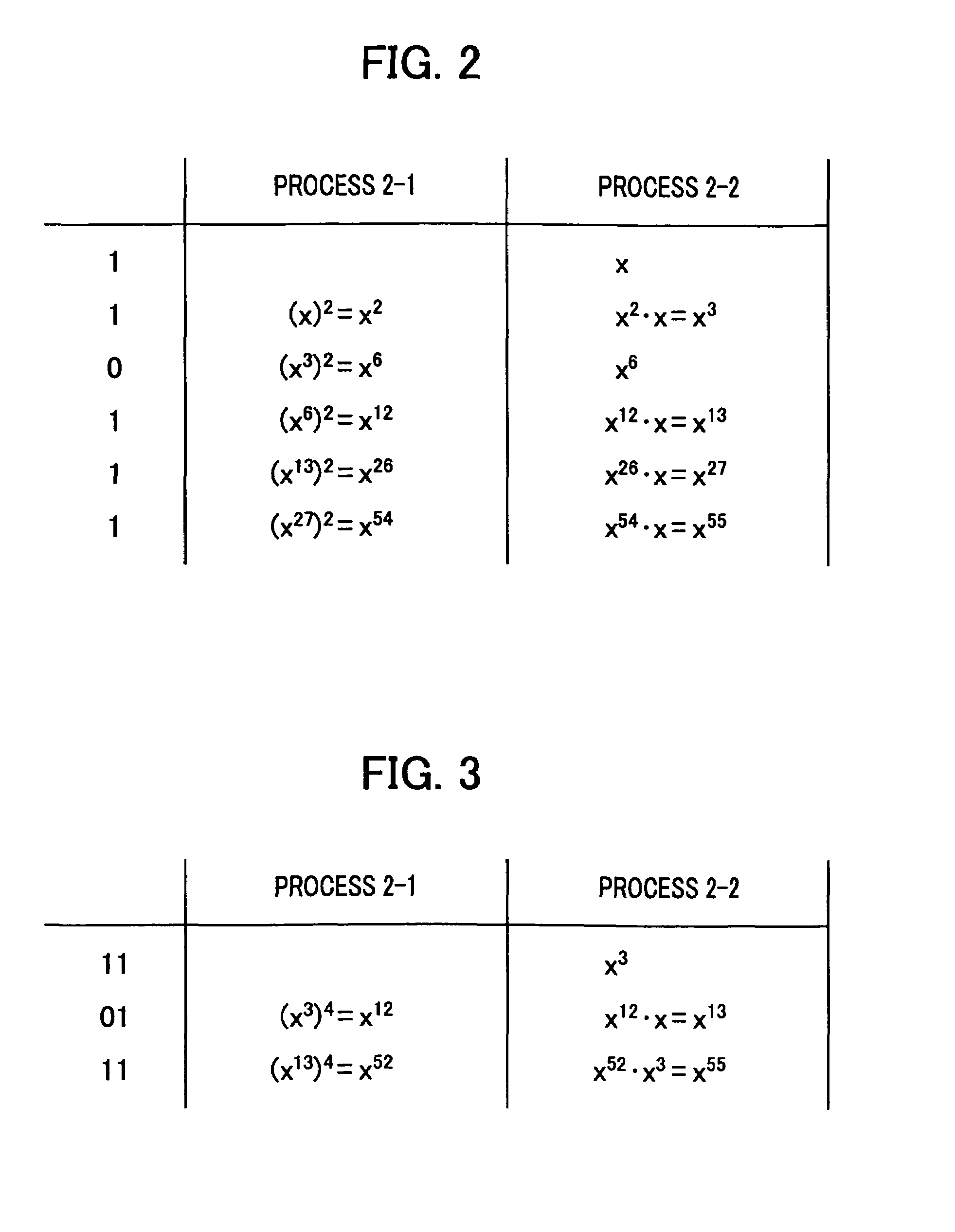Exponent calculation apparatus and method, and program
a technology of exponents and calculations, applied in the field of exponent calculation apparatuses, can solve the problems of disadvantageous increase in pre-calculation and disadvantageous increase in calculation, and achieve the effect of reducing pre-calculation and the size of the table, and reducing the number of calculations
- Summary
- Abstract
- Description
- Claims
- Application Information
AI Technical Summary
Benefits of technology
Problems solved by technology
Method used
Image
Examples
first embodiment
[0053]The present invention is applied to, for example, an information processor (host computer) 100 shown in FIG. 1. The information processor 100 of this embodiment includes a computer, such as a personal computer, and realizes a function of exponent calculation.
[0054]As shown in FIG. 1, the information processor 100 includes a modem 118 for a public line or the like, a monitor 102 serving as a display unit, a CPU 103, a ROM 104, a RAM 105, an HD 106, a network connecting unit 107 for a network, a CD drive 108, an FD drive 109, a DVD drive 110, an interface (I / F) 117 for a printer 115, and an interface (I / F) 111 for a mouse 112 and a keyboard 113, serving as an operation unit. These elements are connected through a bus 116 so that communication can be performed.
[0055]The mouse 112 and the keyboard 113 function as the operation unit that is used when a user inputs various instructions to the information processor 100. The input information (operation information) is input to the in...
second embodiment
[0086]In the first embodiment, values in a form of 1[01]L are used as candidate exponents. In the second embodiment, a value (11) is also used as a candidate exponent, so as to reduce calculation amount.
[0087]FIG. 9 shows an example of processing when e=1101101110001010001, as in the first embodiment, and shows a method of forming an addition chain in the pre-calculation corresponding to step S501. The difference from FIG. 6 is that calculation is performed in the order of x→x3→x5→ . . . , instead of the order of x→x2→x4→x5→ . . . . In this embodiment, the addition chain can be shortened, and the number of divided values of the exponent e can be reduced as shown in FIG. 10. Accordingly, calculation amount of modular exponent calculation can be reduced.
third embodiment
[0088]In the first and second embodiments, the exponent e is divided so that bit strings of the divided values do not overlap each other. In the third embodiment, (10) in a bit string is divided into (01) and (01) so as to reduce the calculation amount.
[0089]FIG. 11 shows an example of processing when e=1101101110001010001, as in the first and second embodiments. In the figure, the last 2 bits 10 of the first 3 bits 110 of the exponent e is divided into 01 and 01, and one of the 01 and 01 is added to the first 1 bit so as to obtain 101. The other 01 is added to the remaining bits. By repeating such a dividing process, incidence of candidate exponents is increased, and thus the number of sequential processings in step S503 can be reduced.
[0090]At this time, bit length b_i of f_i is not used as it is in step S503, but overlap between values f_i must be considered. In FIG. 11, the first 7 bits (1101101) is divided in the following way: f_0=(101), b—0=2, f_1=(10101), b—1=1, f_2=(1), and...
PUM
 Login to View More
Login to View More Abstract
Description
Claims
Application Information
 Login to View More
Login to View More - R&D
- Intellectual Property
- Life Sciences
- Materials
- Tech Scout
- Unparalleled Data Quality
- Higher Quality Content
- 60% Fewer Hallucinations
Browse by: Latest US Patents, China's latest patents, Technical Efficacy Thesaurus, Application Domain, Technology Topic, Popular Technical Reports.
© 2025 PatSnap. All rights reserved.Legal|Privacy policy|Modern Slavery Act Transparency Statement|Sitemap|About US| Contact US: help@patsnap.com



